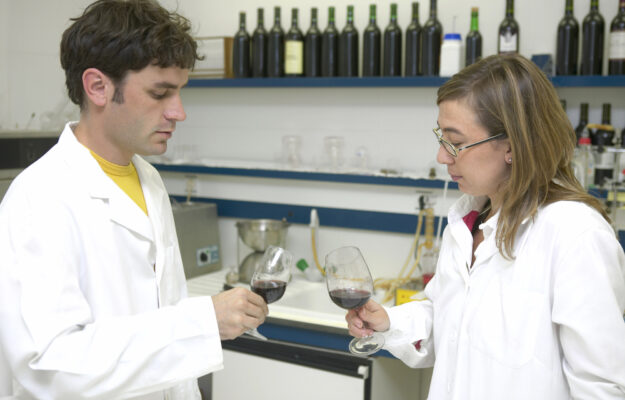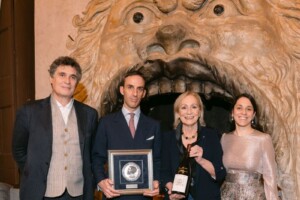It is firmly written in the recent history of the sector that 2023 was a difficult year for Italian wine. As is, however, that the wine economy has held up, albeit experiencing more or less profound changes. This is confirmed by the “Annual Report 2024” by Valoritalia, the largest Italian wine certification body, led by Francesco Liantonio and Giuseppe Liberatore, president and general manager of a reality that certifies the wines of 49 Docg out of 77, 133 Doc out of 330 and 37 Igt out of 118, equal to 56% of certified Italian Dop and Igp wine, for more than 2.3 billion bottles (of which 1.3 of Doc wines, 389 million of Docg wines and 662 million of Igt wines), for an economic value of more than 9.2 billion euros (with the top 20 appellations alone worth 7.5 billion euros of certified wine on the weighted average ex-cellar price of the individual appellations, equal to 82% of the total).
“For Italian wine, 2023 is in the midst of an adverse international conjuncture, conditioned by manifest conflicts and unfavorable expectations that certainly did not support that recovery in consumption that we were hoping for. Moreover, taken as a whole, the data would seem to return a positive image of 2023 performance, given that, on 2022, bottled volumes even grew by a not inconsiderable 0.54%, even 2.8 % compared to the average of the previous three years. It is admittedly true that the exit from the pandemic had stimulated a substantial recovery in consumption that would sooner or later wear off, but as sometimes happens the overall average ends up hiding even more significant differences”, Liantonio writes in his preface.
From the data, one of the evidences that emerged was the growth of Igt wines, in 2023, growing in volume by 16.5%, parts to 97.6 million more bottles over 2022. A figure in sharp contrast to the -9.2% of the type in the previous two years. This growth came at the expense of Doc wine (-2.8% over 2022) and Docg wines (-5.7% over 2022, and -8.1% over 2021).
“It is a result that lends itself to many readings: some positive, some less so, and some decidedly negative. Negative”, Valoritalia points out, “is the fact that those who suffered most from the economic situation were the Doc and Docg, that is, the denominations that represent the top of our quality pyramid. Suffice it to say that, in 2023, only seven of the top 30 Doc and Docg wines (which, in any case, represent 91% of the volumes bottled by these types) achieved a positive result. Taken together, these in fact lost 420,000 hectoliters of bottled product, or 56 million bottles. In economic terms, the increase in revenues related to the growth of IGT did not, however, compensate for the reductions in other product types, and in fact the final economic balance contracted, according to our calculations, by 1.3%. Conversely, positive is the indisputable fact that the Italian production structure has shown great adaptability even in the most difficult conditions. A decline in demand in some market segments has been matched by an increase in the supply of compensatory products, albeit with lower added value. A mechanism that, while minimizing the recessionary effects, once again showed the great flexibility of our business system. Again, however, the overall figure covers substantial differences”.
In 2023, the Report further explains, it was the Northeastern denominations that showed the best performance: in the face of a physiological contraction of Prosecco Doc, the true locomotive of Italian oenology, which, in one year, lost -3.5% in volumes, other appellations saw market share grow; such as Asolo Prosecco, which recorded a remarkable +14.5%, equal to almost 3.5 million bottles more than the previous year; or Veneto Igt, which more than doubled bottlings, bringing it very close to one million hectoliters. Overall, the aggregate quantitative result of all viticulture in the Northeast is positive by 3.7%, while the country’s other production areas remained in negative territory. Particularly significant was the contraction in the North-West regions (Lombardy and Piedmont), which, in 2023, lost 8.3% of volumes over 2022 and 6.8% over the average of the previous three-year period, and in the Center (Marche, Umbria, Tuscany and Lazio), which lost 5.3% over 2022 and 3.2% over the average of the previous three-year period. In both areas, with the exception of Oltrepò Pavese, all major appellations suffered from the economic situation, losing market share.
But, looking to the future, Valoritalia points out, the difficulties related to the drop in consumption will be compounded by those, which, in all likelihood, will be brought by the entry onto the market (partly already begun) of wines from the 2023 vintage, one of the scarcest in recent decades. As of December 31, 2023, the volume of stocks recorded by Valoritalia was 31.76 million hectoliters, 2.65 million (-7.7%) less than that recorded on the same day of the previous year. The biggest losses were suffered by regions in the Northeast (-9.21%) and Central Italy (-8.3%), while those in the Northwest endured only a very slight decline, basically staying at the same values as the previous year (-0.26%). Still, some small signs of recovery seem to be coming, at least from the first four months of 2024, with an overall growth in bottled volumes of 1.1%; growth sustained, this time, by a recovery of Doc and Docg (+1.9%), while Igt lost a dry 1.5%. Although it is still decidedly early to speak of a true recovery, because international tensions undermining the economy and consumer confidence are still well and truly present, the focus on healthfulness, driven in part by campaigns that indict not abuse but simple consumption, is growing faster and faster, and the vagaries of the changing climate are now a constant that complicates work (and increases costs) for producers.
A complicated scenario, for an Italian wine that, however, can be “trusted”: although “nonconformities” are on the rise, of the 51,768 samples submitted for verification, 50,495 were found to be suitable, 857 revisable, and only 399, in the end, unsuitable. An important aspect, because certifications are increasingly important. Also on the sustainability front, which consumers are increasingly looking at. “Italian wine companies have understood very well that in the near future sustainability will play a key role in market positioning”, reiterated Valoritalia President Francesco Liantonio. “This is demonstrated by the great success of Equalitas, the sustainability standard developed in Italy for wine companies and recently cited by an article in the authoritative “New York Times” as one of the virtuous examples worldwide. There are already 228 Italian wine companies certified with Equalitas, representing an area planted with vines of more than 76,000 hectares and a production of 7.4 million hectoliters, but as our surveys show, many more companies have decided to take this path. This is a sign of the great dynamism of our sector”.
Also speaking on the topic of sustainability was Emanuele Fontana, Head of Agribusiness Crédit Agricole, who highlighted the changes taking place in the banking system as well. Explaining how “Esg indicators, in the medium/long-term horizon, will become increasingly important, both because of the impact at the level of economic sectors and because of the positive correlation between economic performance of the company and high indicators of Esg nature. The correlation between credit risk and Esg Sustainability is an expected relationship that will be consolidated in the medium to long term, which is fundamental for the future development of wine production and agriculture in general”. Sustainability, however, can only be talked about if it is supported by certifications: “from this point of view, the work carried out by our structure takes on an increasingly tangible value”, emphasized Giuseppe Liberatore, Valoritalia general manager. “Our task is to provide guarantees to operators and consumers on compliance with the procedures and standards required by the regulations. Every year we certify more than 2 billion bottles referable to 92,000 operators and destined for markets around the world; we guarantee their complete traceability by verifying more than 800,000 movements; we directly manage more than 8,000 inspection visits, in the vineyard and in the cellar, and 13,000 tasting commissions. It is this capillarity in verification that guarantees the market; a commitment we also ensure for the other certification standards to which we are committed, starting with sustainability standards such as Equalitas and EquiPlanet”.
Copyright © 2000/2025
Contatti: info@winenews.it
Seguici anche su Twitter: @WineNewsIt
Seguici anche su Facebook: @winenewsit
Questo articolo è tratto dall'archivio di WineNews - Tutti i diritti riservati - Copyright © 2000/2025









































































































































































































